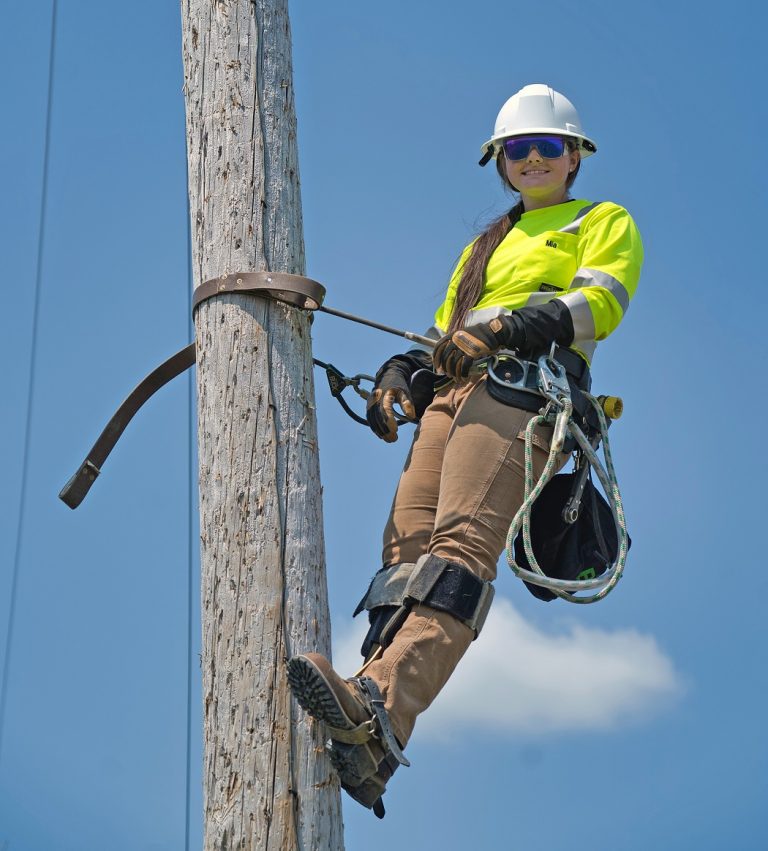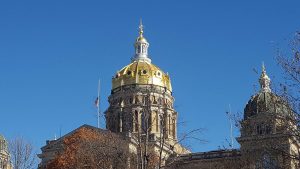Iowa DNR — Anna Buckardt Thomas, DNR Avian Ecologist — Bird migration boggles my mind! It must be some kind of magic because how on earth can a creature that weighs less than a banana fly thousands of miles one-way and find the same exact tree it nested in last year!?!
Literally! I studied Golden-winged Warblers and had a population of birds that I marked with unique colored leg bands which allowed me to identify individuals by sight. I spent three summers in the same study system in Wisconsin, and without fail, there were individuals that would sit and sing from the same tree each summer after spending the winter in Costa Rica. Truly incredible!!!!
Nearly 40% of the bird species on earth migrate. With some flying as high as 37,000 feet (Bar-headed Goose) as far as 49,000 miles in a year (Arctic Tern) and as fast as 60 mph in sustained flight (Great Snipe), migratory birds are a hearty bunch worthy of our respect and admiration.
So why do they migrate in the first place? And how do they have the energy to fly so far?
Well, migration is an adaptation that evolved because of competition for resources during the breeding season. Resources like nesting locations and food are limiting factors for breeding, and migration allows birds to take advantage of seasonally available resources in more northern latitudes. In the western hemisphere, we use the term Neotropical migrant to generally describe species that breed in the U.S. and Canada (taking advantage of plants and insects during our productive spring and summer months) and winter in Mexico or other countries in Central and South America.
These birds travel varying distances and use a variety of strategies to migrate. Some travel during the day and some at night. Some travel in groups and others alone. Some travel in large leaps while others make many smaller movements. One key thing that is common to all migrants though is the need for enough energy to make their long journey. Leading up to migration, birds go into a phase called hyperphagia, where they stuff themselves as full as they can, sometimes even doubling their weight. All this food is stored as fat and is used as energy to fuel their long migratory journey. It’s almost like when a human goes on a road trip and makes sure to pack enough Popcorn and Twizzlers to get them to their destination…except on a MUCH larger scale. Many birds also stop along the way for a few hours or a few days at a time to refuel as needed. By the time birds arrive on the breeding grounds, all of this stored up fat and sometimes even muscle mass has been used up to fuel their journey. Luckily, once they arrive, food is plentiful and they can quickly recover and start the important tasks of finding a mate, building a nest, and raising young.
But how do they know where they are going or when to leave?
Scientists still don’t fully understand how birds know when and where to migrate; it’s just too complex. What we do know is that migration is generally triggered by some combination of changes in day-length, food availability, and temperature, and underlying genetics. All of these signals indicate a change in season and the need to migrate.
So how about their navigational skills? Some species may learn migratory routes and wintering locations from their parents, but in many cases juvenile birds make their first migration solo and somehow know exactly where they need to go and how to prepare. Once again, many factors are thought to contribute to birds’ navigational abilities, with this important skill at least partially programmed into their genetic code. There is evidence that the sun, the stars, landmarks, and even the earth’s magnetic fields all help to guide birds. For some birds a sense of smell might also be important.
Ultimately, the rigors of migration pay off, because the abundant resources of the north allow birds breeding in the U.S. and Canada to raise more young each year (average 4-6) than their cousins breeding in the tropics (average 2-3). And although it’s most definitely selfish, I too am grateful for bird migration, because the colors and songs of migratory birds never fail to make me smile!











